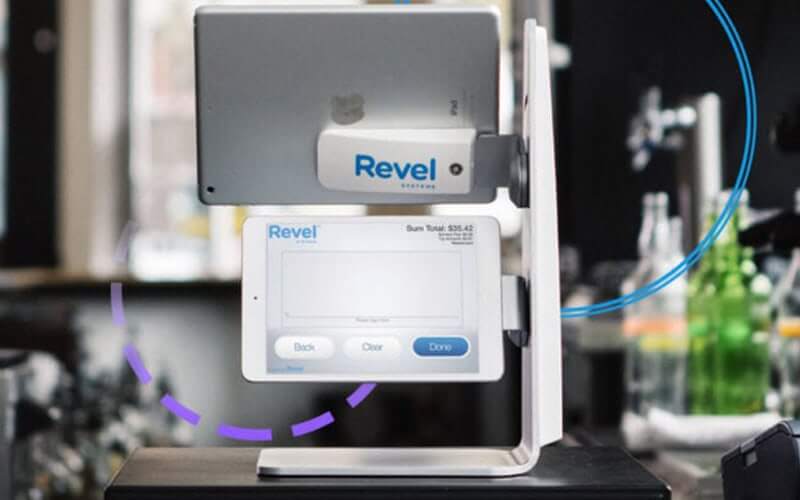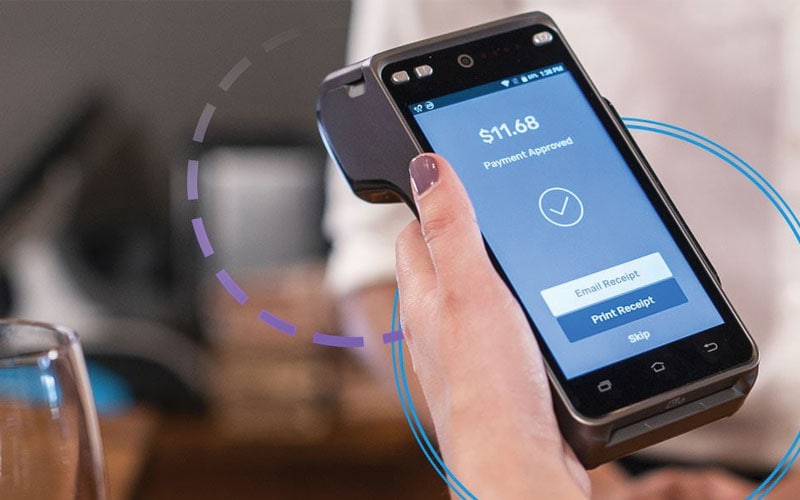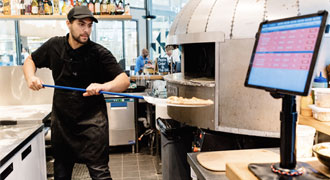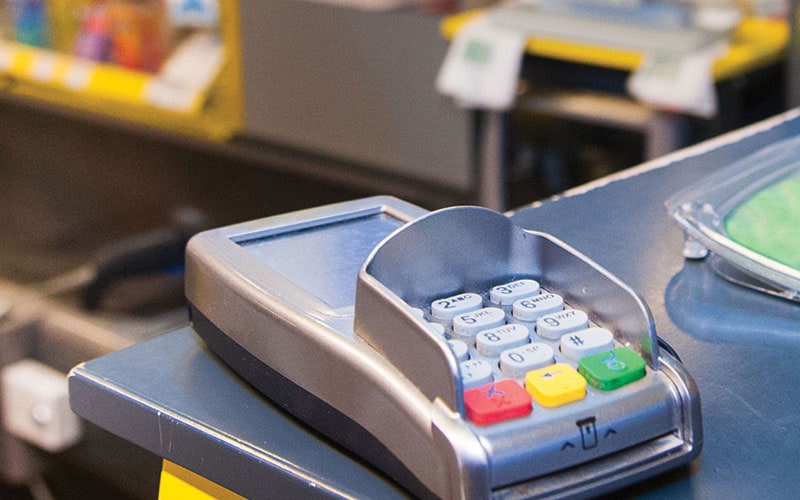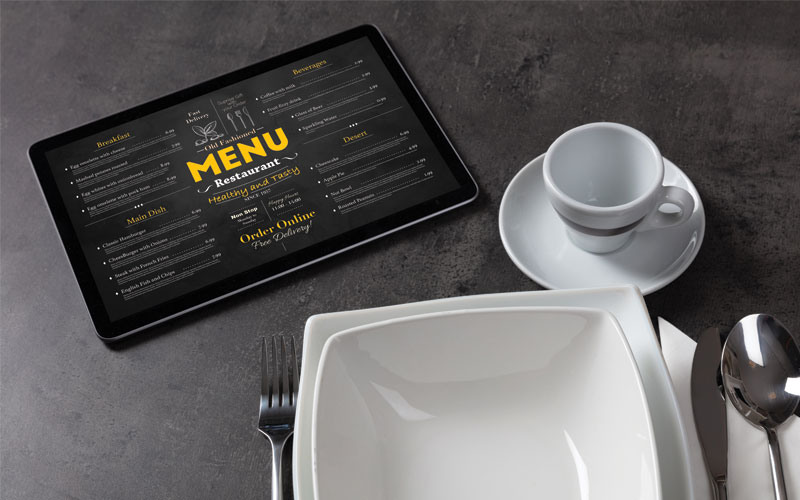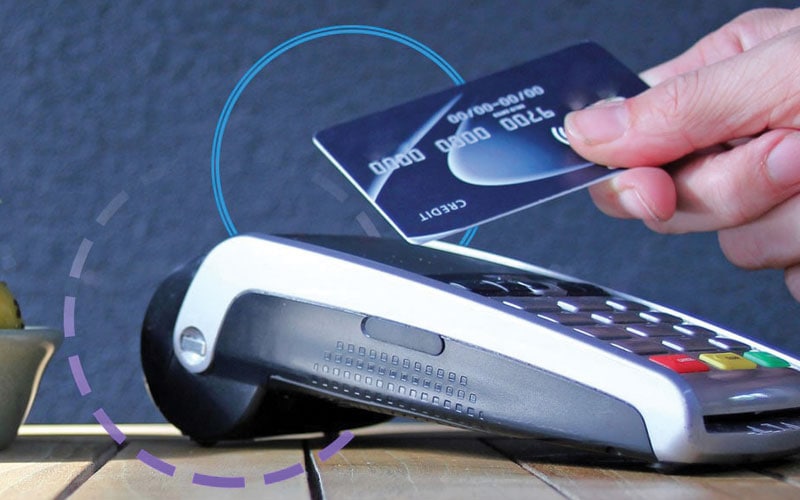A Comprehensive Approach to Restaurant Credit Card Fees
You probably already discovered how expensive credit card fees are for your restaurant, averaging around 1.5% to 3.5% per transaction.
This significant cost ranks third highest for businesses, following food and labor expenses.
Fortunately, there are ways to mitigate these fees and optimize your restaurant’s financial performance. Let’s find out how.
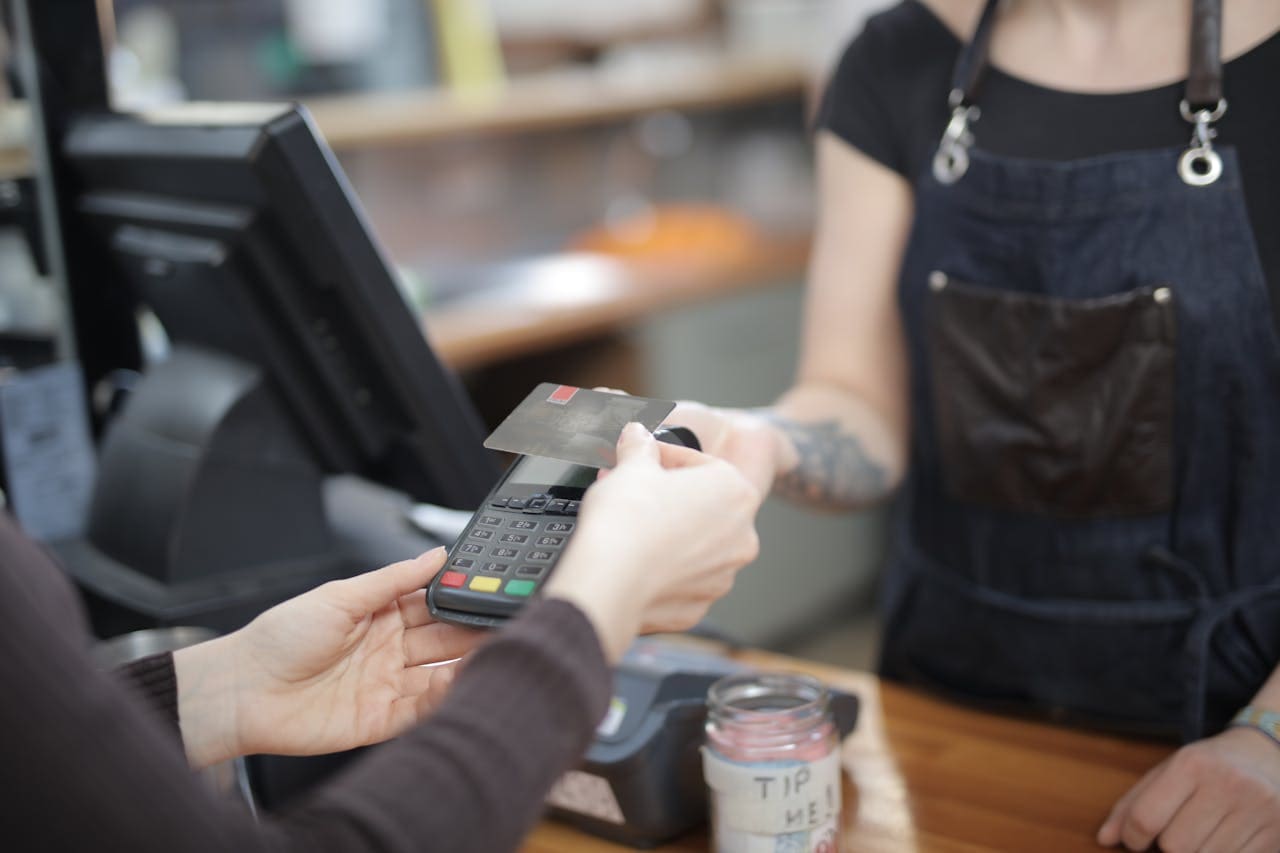
Key Takeaways
- Understand fee structures and negotiate for competitive rates.
- Prioritize PCI compliance and security measures.
- Monitor for hidden fees and regularly review statements.
- Utilize technology for efficiency and cost-effectiveness.
- Educate staff and stay informed to optimize credit card processing.
Types of Restaurant Credit Card Fees

Types of restaurant credit card processing fees can vary; understanding them is crucial for managing costs effectively. Here’s a breakdown of some common fees your restaurant may encounter:
- Interchange Fees: These are fees charged by the card-issuing bank to the acquiring bank (the bank that processes the payment) for each transaction. They comprise a percentage of the transaction value plus a flat fee. Interchange fees vary depending on factors such as card type (credit or debit), card brand (Visa, Mastercard, etc.), and transaction details (swiped, keyed, online, etc.).
- Assessment Fees: Card networks (e.g., Visa, Mastercard) charge assessment fees, which are based on a percentage of the transaction value. These fees cover the cost of network services, including authorization, clearing, and settlement of transactions. While the card networks set assessment fees that are not negotiable, they can still impact a restaurant’s overall processing costs.
- Markup Fees: Payment processors add markup fees on top of interchange and assessment fees to cover their operational costs and generate profit. Markup fees can be structured in various ways, such as a percentage of the transaction value, a flat fee per transaction, or a combination of both. Payment processors may offer different pricing models, such as interchange-plus pricing (where the processor’s markup is added to the interchange fees) or tiered pricing (where transactions are grouped into different tiers with varying rates).
- Chargeback Fees: Chargeback fees are incurred when a customer disputes a transaction and requests a refund from their card-issuing bank. Chargebacks can occur for various reasons, including fraud, disputes over the quality of goods or services, or unauthorized transactions. When a chargeback occurs, the merchant (restaurant) may be required to pay a fee to cover the cost of processing the dispute.
- Hidden Fees: Hidden fees are additional charges that your processing agreement may not clearly disclose upfront. These fees can include various charges, such as statement, service, batch, gateway, and non-compliance fees. Hidden fees can significantly impact your processing costs and reduce your restaurant’s profitability.
Factors Influencing Credit Card Fees for Restaurants
- Merchant Category Code (MCC): The MCC assigned to your restaurant by credit card networks categorizes your business based on the goods or services you offer. Different MCCs may have varying interchange rates, affecting the fees you pay for processing transactions. For example, restaurants have a different MCC than retail stores or online merchants, leading to different interchange rates.
- Processing Method: The method used to process payments, such as in-person, online, or mobile, can impact credit card fees. For example, card-present transactions (swiped or dipped) have lower interchange rates and lower fraud risk compared to card-not-present transactions (keyed or online), which may incur higher fees due to increased fraud risk.
- Average Transaction Value: Your restaurant’s average dollar amount of transactions processed can influence credit card fees. Higher-value transactions may incur lower percentage-based fees but higher flat fees, while lower-value transactions may have higher percentage-based fees but lower flat fees.
- Payment Processor Pricing Structure: The pricing structure offered by your payment processor, such as interchange-plus pricing, tiered pricing, or flat-rate pricing, can significantly impact credit card fees. Understanding the pros and cons of each pricing model and negotiating competitive rates can help minimize costs.
- Economic Factors: Economic conditions, such as changes in interest rates, inflation, and consumer spending patterns, can indirectly influence credit card fees. For example, during periods of economic downturn, credit card networks may adjust interchange rates or implement new fee structures in response to changes in consumer behavior and market dynamics.
7 Tips for Reducing Restaurant Credit Card Fees

1. Understanding the Different Fee Structures and What You’re Paying
Your payment processor will offer your restaurant three different pricing models;
Flat Fees
- No matter what kind of card your customer uses, you’ll have to pay a set fee for each transaction.
- This fee setup is great for small and new businesses because it’s affordable, fair, and easy to understand.
Interchange-Plus or Cost-Plus Pricing
- Involves two parts: a fee set by the credit card processor and another set by the card network.
- You can choose to pay a fixed fee or a percentage, making it easier for big businesses to plan their budget.
Subscription or Membership Pricing
- Similar to interchange-plus, but you pay a flat monthly fee that covers certain other fees.
- You’ll also pay a small fee for each transaction.
- This is a good choice for small and growing businesses.
Whether it’s credit or debit card payments, knowing the fee structures is crucial.
2. Negotiate With Your Processors
It’s time to brush up on your negotiation skills because you can negotiate with processors, especially if you have a significant transaction volume. Inquire about any potential credit card surcharge and negotiate terms accordingly.
Yet before you try to seek lower fees, do your homework and determine your annual growth and sales to present yourself as a valuable restaurant owner.
Doing so will help you receive better contract terms and leverage the best deal. Additionally, remember that some fees, like interchange fees, are set by card networks and have less room for negotiation.
3. Reduce the Possibility of Credit Fraud
If you’re a high-risk merchant, your payment processor will charge you a higher rate to cover any risks.
So, while drawing up a solid negotiation proposal, include how you comply with PCI standards, maintain an organized transaction history, promptly address chargebacks, and use the latest anti-fraud prevention tools.
For example, investing in a processor that accepts EMV chip cards will enhance security and minimize liability. At DBS, we offer our clients FREE EMV terminals that use tokenization to protect sensitive data and save you the most money.
4. Take Advantage of Cost-Effective Technologies
Thanks to the rapidly changing landscape, you can now integrate your credit card processing and point-of-sale system (POS) under the same roof.
While this method won’t necessarily reduce your payment processing fees, it does save you money in the long run.
Integrated payments simplify your payment processing, eliminating the hassle of typing information in manually, reducing the possibility of making mistakes, and minimizing additional costs like fraud prevention fees. It’s highly worth considering.
5. Keep An Eye Out For Hidden Fees
One of the best ways to discover how to save your restaurant on credit card processing costs is to keep an eye out for hidden fees.
Unfortunately, some credit card companies might not disclose all their fees, including unnecessary flat and hidden charges.
Therefore, thoroughly review your contract, and if you encounter any unclear or suspicious numbers, don’t hesitate to contact your processor for clarification.
You can also shop around to ensure you find a trustworthy and loyal company upfront about their terms.
6. Regularly Review and Analyze Statements for Errors or Overcharges
Regularly reviewing your credit card processing statements can help identify errors or overcharges.
Look for discrepancies in transaction fees, batch fees, or other charges that may not be in accordance with your agreement.
If you notice any discrepancies, contact your processor promptly to address the issue and request a correction.
7. Incentivize With Paying Cash (or Cash Discount)
In a perfect world, your customers would pay using only cash. However, 41% of consumers prefer the cashless route, which is only going up.
But, you can change their mind or at least give them another option to consider: promote cash discounts. For example, offer a 2% discount to any customer who pays with cash or learn how to set up a loyalty program for your restaurant and build it around cash-only purchases. It’s an incentive that may save you money.
Choosing the Right Payment Processor
Here are some factors to consider when selecting a payment processor:
- Pricing Transparency: Look for a payment processor that offers transparent pricing with clear disclosure of all fees. Avoid processors that hide fees or use complex pricing structures that are difficult to understand.
- Customer Service Quality: Consider the level of customer service the payment processor provides. Choose a processor that offers responsive customer support and assistance with any issues or concerns that may arise.
- Integration Capabilities: Determine whether the payment processor integrates with your restaurant’s existing systems, such as your point-of-sale (POS) system or accounting software. Integration can streamline operations and reduce the risk of errors.
- Security Features: Prioritize payment processors that prioritize security and offer robust fraud prevention measures. Look for PCI-compliant processors with encryption and tokenization features to protect sensitive cardholder data.
- Acceptance of Card Types: Ensure that the payment processor accepts credit and debit cards, including Visa, Mastercard, American Express, and Discover. This will ensure that your restaurant can accommodate a wide range of customers and payment preferences.
- Additional Services and Features: Consider any additional services or features offered by the payment processor, such as analytics and reporting tools, gift card programs, or loyalty programs. These extra services can add value to your restaurant’s payment processing solution.
Compliance and Security Considerations

Here’s what you need to know to ensure that your restaurant remains compliant and secure:
Payment Card Industry (PCI) Compliance: PCI compliance is a set of security standards to protect cardholder data during credit card transactions. Compliance is mandatory for businesses that accept credit card payments, including restaurants. To achieve PCI compliance, you must adhere to a set of requirements established by the Payment Card Industry Security Standards Council (PCI SSC), such as:
- Installing and maintaining a secure network.
- Protecting cardholder data through encryption and other security measures.
- Regularly monitoring and testing your systems for vulnerabilities.
- Implementing strong access control measures to restrict access to cardholder data.
- Maintaining a policy that addresses information security for employees and contractors.
Security Measures: In addition to PCI compliance, there are several security measures you can implement to enhance the security of credit card transactions in your restaurant:
- Use EMV chip card technology: EMV chip cards provide enhanced security compared to traditional magnetic stripe cards, as they generate a unique code for each transaction, making them more challenging to counterfeit.
- Tokenization: Tokenization replaces sensitive cardholder data with unique tokens, reducing the risk of data theft in case of a breach.
- Point-to-point encryption (P2PE): P2PE encrypts cardholder data from the point of entry (e.g., card swipe or chip insertion) to the payment processor, preventing unauthorized access to sensitive information.
- Secure POS systems: Ensure your point-of-sale (POS) system is secure and regularly updated with the latest security patches and software updates.
How to Stay Ahead and Save Money
Do you feel ready to put into practice how to save your restaurant on credit card fees?
While dealing with these fees certainly isn’t a small expense, the good news is you can negotiate and seek transparent pricing, fast and secure payment deposits, system integration (an effective point-of-sale system), and fraud prevention solutions.
If you need more support, we’re here for you. Our family-run business offers payment processing solutions to help you grow your business while reducing costs.
Here are a few benefits to consider;
- Single 24/7 Contact for POS & Payment Solutions
- POS Integrated & Stand-Alone Terminal Solutions
- EMV Chip Card & NFC Payment Security
- Accepts American Express, Discover, MasterCard & VISA
- 4G Automatic Backup Solutions Available
- And more!
Book a demonstration or call our customer support team for a FREE quote. We’re eager to help.
FAQs
Can a restaurant charge credit card fees?
Yes, but regulations vary by location. Some states allow surcharges, while others prohibit them or have specific requirements. Check local laws and card network regulations before implementing.
What is the average credit card processing fee for restaurants?
The average processing fee ranges from 1.5% to 3.5% per transaction, depending on factors such as card type, processing method, and transaction volume.
Do restaurants pay credit card fees on tips?
Yes, restaurants pay credit card fees on tip amounts processed through credit card transactions. These fees are calculated based on the total transaction amount, including tips.




